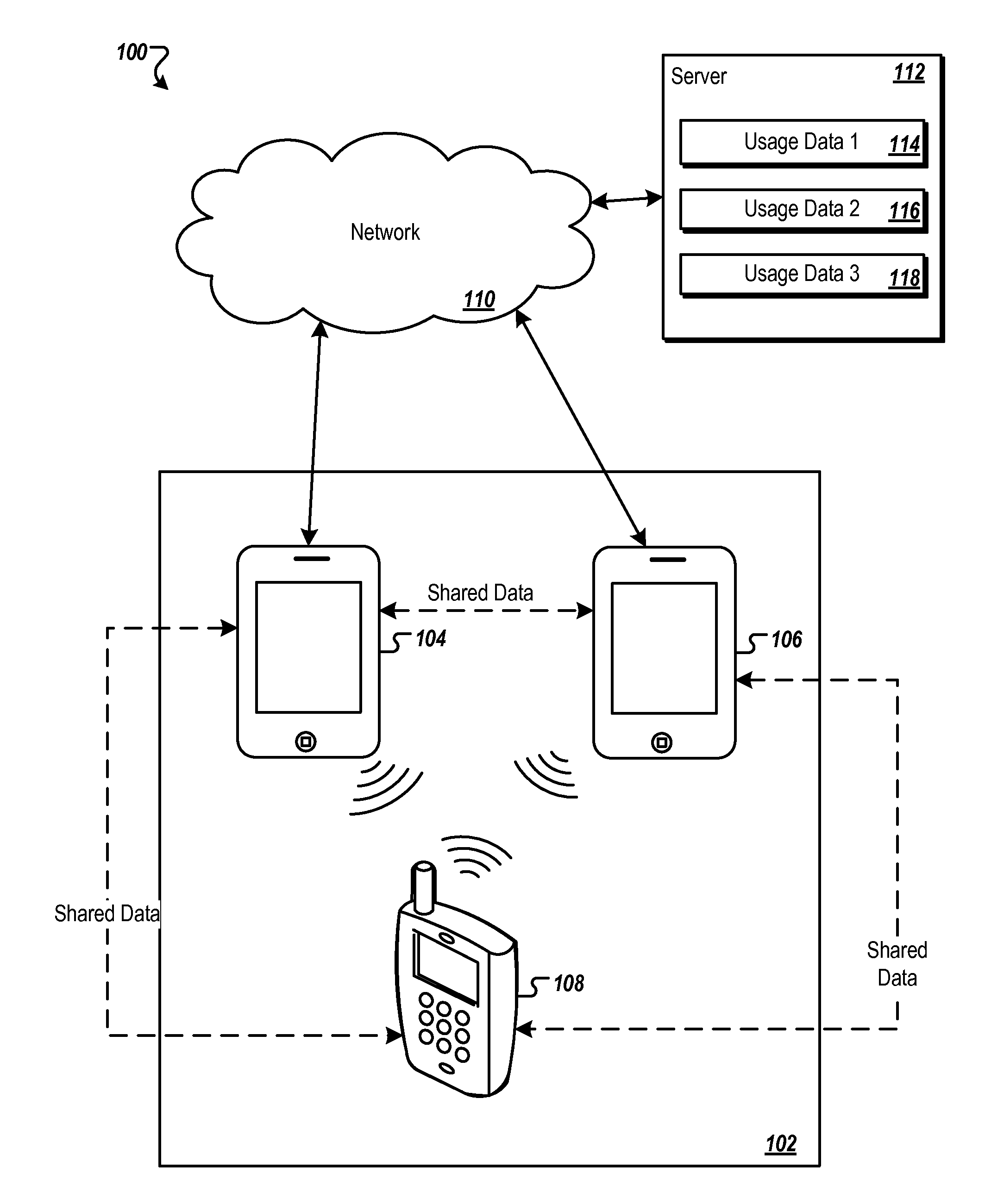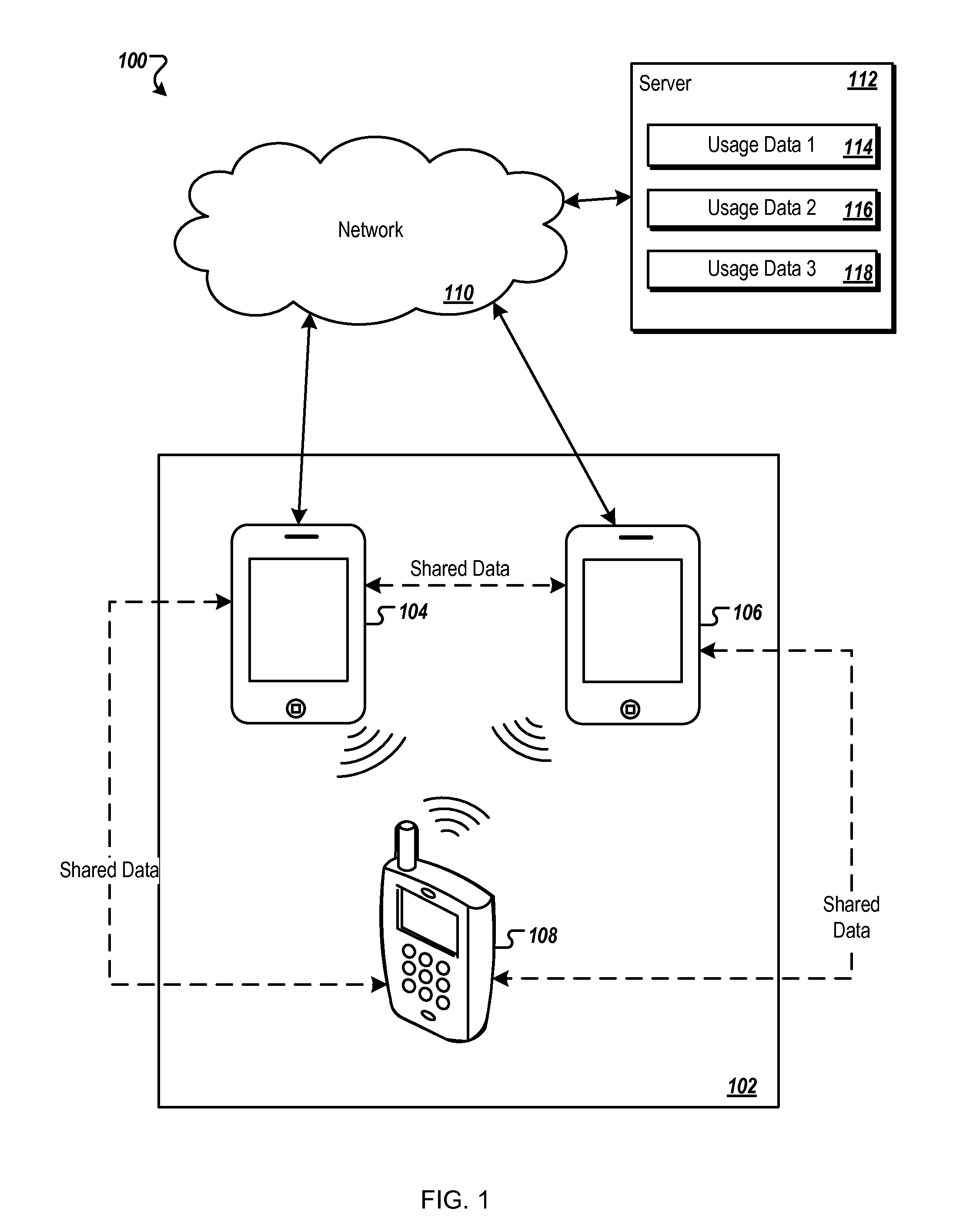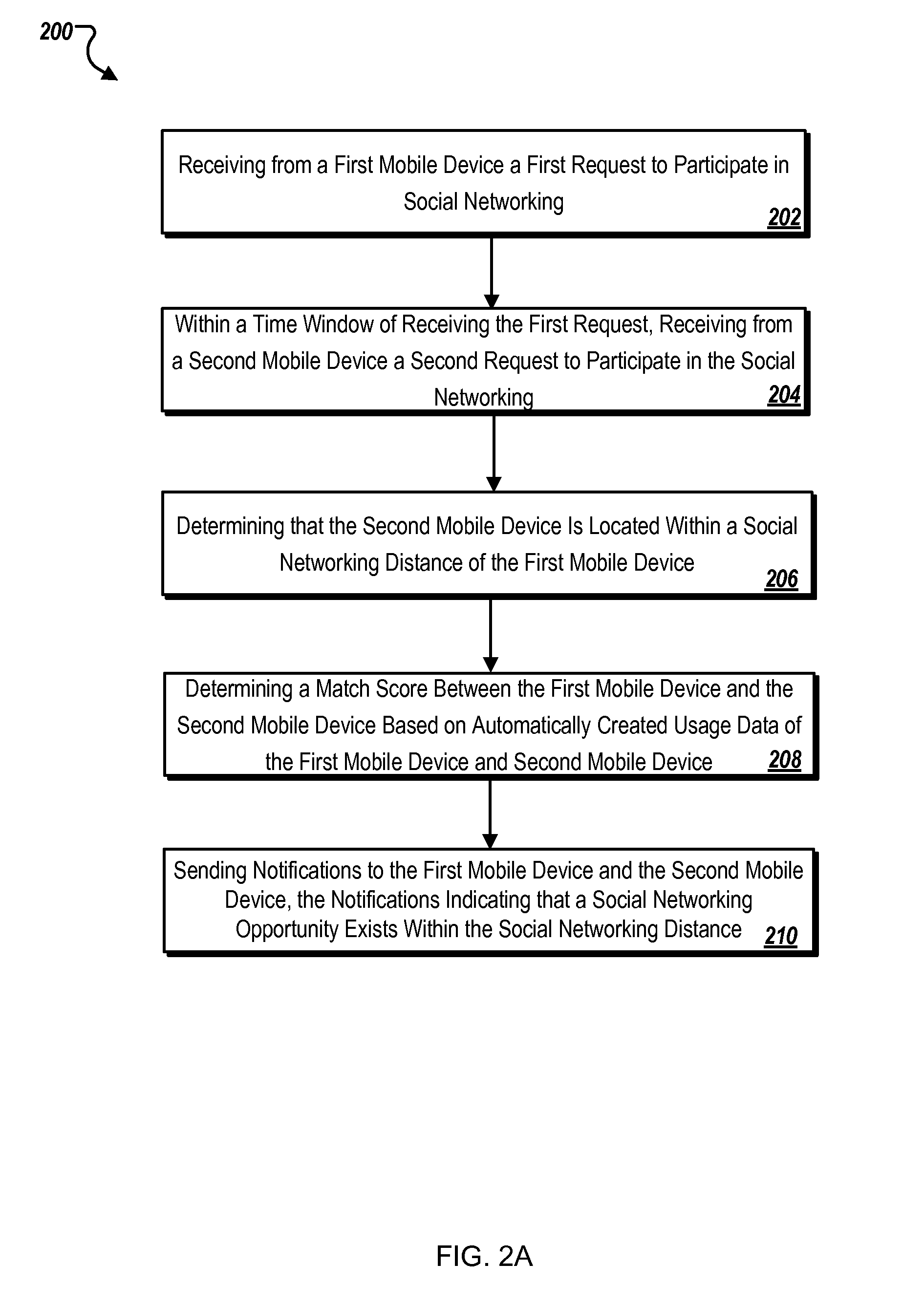Ad hoc networking based on content and location
a technology of content and location, applied in the field of social networking, can solve the problems of difficult identification of new people with common interests for friendships, affecting the social network, and requiring a substantial amount of time and effort, and achieve the effect of encouraging spontaneous user action and encouraging spontaneous conversation
- Summary
- Abstract
- Description
- Claims
- Application Information
AI Technical Summary
Benefits of technology
Problems solved by technology
Method used
Image
Examples
Embodiment Construction
Overview of Ad Hoc Networking Based on Content and Location
FIG. 1 illustrates an exemplary system 100 for ad hoc networking based on content and location. For illustrative purposes, a “Buddy Finder” feature that is backed by ad hoc networking technology based on content and location will be described. The “Buddy Finder” feature can have a user interface for display on a mobile device.
In example system 100, mobile devices 104, 106, and 108 belong to users Adam, Baker, and Carol, respectively. In some implementations, mobile devices 104, 106, and 108 are location-aware mobile devices (e.g., includes GPS). Mobile devices 104, 106, and 108 can include handheld computers, personal digital assistants, cellular telephones, network appliances, cameras, smart phones, electronic tablets, enhanced general packet radio service (EGPRS) mobile phones, network base stations, media players, navigation devices, email devices, game consoles, or a combination of any two or more of these data processin...
PUM
 Login to View More
Login to View More Abstract
Description
Claims
Application Information
 Login to View More
Login to View More - R&D
- Intellectual Property
- Life Sciences
- Materials
- Tech Scout
- Unparalleled Data Quality
- Higher Quality Content
- 60% Fewer Hallucinations
Browse by: Latest US Patents, China's latest patents, Technical Efficacy Thesaurus, Application Domain, Technology Topic, Popular Technical Reports.
© 2025 PatSnap. All rights reserved.Legal|Privacy policy|Modern Slavery Act Transparency Statement|Sitemap|About US| Contact US: help@patsnap.com



